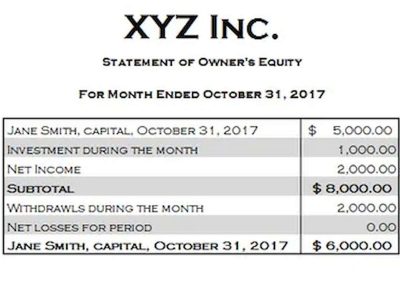
It is recorded as a liability because the company still has an outstanding obligation to provide these goods or services. Tenant agreements are the foundation upon which the treatment of unearned rent is built, as they outline the terms and conditions of the rental arrangement, including payment schedules. These contracts what are retained earnings serve as a roadmap for both the recognition of rental income and the obligations of the property owner.
Short-Term Debt
However, understanding how unearned revenue impacts the books and customer relationships is key to making the most out of this financial component. In this case, the company is unearned rent a current liability ABC needs to record the $2,000 of cash received as an unearned rent revenue in the journal entry on December 29, 2020. Items like rent, deferred taxes, payroll, and pension obligations can also be listed under long-term liabilities. A liability, in general, is an obligation to, or something that you owe somebody else. Liabilities are defined as a company’s legal financial debts or obligations that arise during the course of business operations. Liabilities are settled over time through the transfer of economic benefits including money, goods, or services.

Current Liabilities

For example, most lawyers are required to deposit unearned fees into an arms-length IOLTA trust account. The penalties for removing unearned cash from an IOLTA account can be harsh—sometimes even leading to disbarment. The current liability section of Safeway Stores Inc. shown below is typical of those found in the balance sheets of many US companies. These liabilities are generally classified as current because the goods or services are usually delivered or performed within one year or the operating cycle (if longer than one year). If this is not the case, they should be classified as non-current liabilities. As noted, however, the current portion, if any, of these long-term liabilities is classified as current liabilities.
- At the end of the second quarter of 2020, Morningstar had $287 million in unearned revenue, up from $250 million from the prior-year end.
- According to cash basis accounting, you “earn” sales revenue the moment you get a cash payment, end of story.
- These are are all various ways of referring to unearned revenue in accounting.
- When the prepaid is reduced, the expense is recorded on the income statement.
- Because current liabilities are payable in a relatively short period of time, they are recorded at their face value.
- Clear disclosure helps ensure transparency and accurate financial reporting for investors and other stakeholders.
Understanding Unearned Revenue
A common scenario that many technology startups have is when they have a platform that is sold to the customer for a monthly fee. An example of unearned revenue in this scenario would be if a customer were https://www.bookstime.com/ to purchase a full year of access to the company’s tech stack for $1200/year. In order to get this deal, the customer is required to pay the company in full on the spot. Unearned revenue is listed under “current liabilities.” It is part of the total current liabilities as well as total liabilities.

Why Are Accounts Payable a Current Liability?
You record deferred revenue as a short term or current liability on the balance sheet. Current liabilities are expected to be repaid within one year unlike long term liabilities which are expected to last longer. Deferred revenue is a short term liability account because it’s kind of like a debt however, instead of it being money you owe, it’s goods and services owed to customers. Examples of current liabilities include accounts payable, short-term debt, accrued expenses, taxes payable, unearned revenue, and dividends payable.

Unearned rent journal entry

By making this journal entry, the company recognizes $6,000 of the prepayment as earned revenue and decreases the unearned revenue account by the same amount. Learn the proper accounting methods for unearned rent revenue to ensure accurate financial reporting and compliance with tax regulations. Generally, the amount of prepaid expenses that will be used up within one year are reported on a company’s balance sheet as a current asset. As the amount expires, the current asset is reduced and the amount of the reduction is reported as an expense on the income statement. Creating and adjusting journal entries for unearned revenue will be easier if your business uses the accrual accounting method, of which the revenue recognition principle is a cornerstone.
